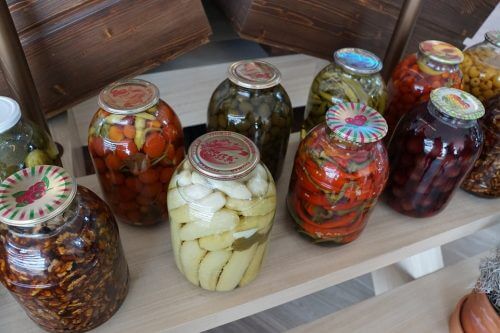Pressure canning is the process of using pressurized steam to attain super-heated temperatures used for food preservation. This process is recommended for canning low-acid foods like meats, vegetables, and fish. The process of preserving these foods is easy with the proper equipment. Online pressure canner reviews can help you in your search. To avoid spoilage these foods need to be canned at 240 degrees Fahrenheit or more. This helps in the destruction of bacterial spores which occur naturally in food.

On the other hand, high-acid foods can be processed in a canner with boiling water. The jar is allowed to cool thus forming a vacuum. This seals off the food thus preventing food spoilage by micro-organisms. Pressure canning allows you to preserve your foods easily and saves you a lot of money. In this discussion, you will learn about pressure canning basics including requirements, the process of canning, safety measures and even benefits of canning.
Benefits of Pressure Canning
-Pressure canning allows you to save money which will have been used to buy more groceries.
-This process eliminates the need for refrigeration which depends on electricity and takes a lot of space.
-It saves time by delivering fast foods which need only quick heating.
-High and prolonged heat allows you to make tenderizing meals even with low-quality meats.
Necessities
Before you start cooking, you need the following;
-A preserving recipe which has been tested.
-You need the food to be canned and other ingredients provided in the recipe.
-Pressure canners are necessary for preserving low-acid foods like meats, vegetables, and poultry.
-You also need glass preserving jars, bands, and new lids.
-Common utensils like a ladle, wooden spoon, jar lifter, jar handler, band tool and a funnel come in handy during the canning process.
-You need pot holders and towels.
Procedure
-First add enough water to the pressure canner since canning takes time, followed by filling the jar and placing it on the rack then fasten the canner lid.
-While the weight is off the vent port, turn the burner to its highest setting then heat the canner until steam starts flowing from the vent port.

-When the recommended pressure is attained as indicated on the dial gauge, start timing the process.
-The heat reaching the canner should be regulated to maintain constant pressure.
-In case the pressure reading is way below the recommended value, increase the pressure and start timing again.
-Turn off the heat and wait for the canner to depressurize after the timed processing is attained.
-Wait until the pressure gauge reads zero which corresponds to an at least 30 minutes when using weighted gauge canners.
-Now, remove unfasten and remove the lid carefully by ensuring it’s facing away from you to avoid burning yourself.
-The canner should be left in the jar for at least 10 minutes to prevent leakages.
-Jar lifters should be used to remove the jar which is then placed on a cooling rack or a towel while avoiding a cold surface which might cause the jar to break due to rapid contraction.
-Leave the jars to cool for 12 to 24 hours while keeping the ring bands loose also avoid pushing down the center of the metal lid.
-After cooling, check the lids if they are well-sealed where unsealed jar means contents need to be reprocessed or refrigerated or served immediately.
-Finally, remove the screw bands, check the integrity of the seals, wash, dry, label and store your jars in a cool, dry place.
Safety Tips
Dial gauges need to be checked for accuracy each year and replacements should be done in case of any fluctuations by 2 pounds of pressure. Dial gauges should not make contact with water. Cleaning should be done using a soapy cloth followed by clean damp cloth. Soapy water can be used to clean weighted gauge lids after which they are rinsed with clean water.

Gaskets for the lid should be handled with care and cleaned as per the manufacturer’s procedure. Faulty gaskets cause steam leakages and tamper with the pressurizing process. All parts of the canner should be cleaned thoroughly to remove foreign matter and prevent odors from forming. Storing your canner is a dry place prevents it from rusting. Directions provided by the manufacturer for care and storage should be strictly followed.
Conclusion
Pressure canning is a simple process which saves you money and time. It is very independent of refrigeration and improves the taste of inexpensive low-acid foods. All you need is necessary utensils, food to be canned, and canning equipment. Make sure to clean your canning equipment as directed by the manufacturer. Check the seals and store your jars in a cool, dry place. Stay safe which canning by opening the lids away from you. Internalize these pressure canning basics diligently if you want to enjoy tasty fast foods which are free from refrigeration.
I didn’t understand the lines where it says leave the canner should be left in the jar,…I thought it should be the other way around,…the jar should be left in the c…